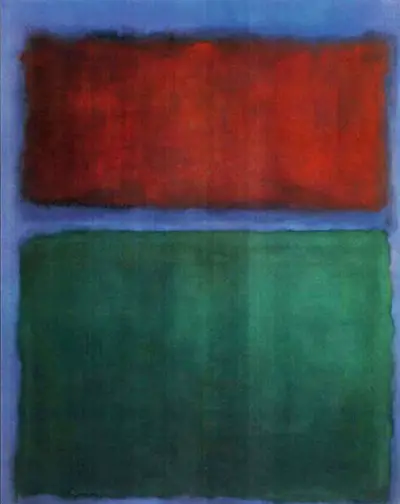The artist would settle upon this style after years of working with Expressionist and Surrealist methods. He left behind an oeuvre which was actually far more diverse than many realise, as today most are only aware of the type of paintings featured here. He wanted to enter a truly abstract world, where nothing on the canvas could be connected to reality. Viewers would be immersed in colour, allowing their minds to be lost within this infinite world where space took on a new life. This made the display of his work important, and he took plenty of interest whenever his work was exhibited, up until the artworks were sold privately, at which point any semblance of control was lost entirely. He loved to have space between his artworks, both vertically and horizontally, so that one's attention would be completely given to the respective painting, one at a time.
Rothko appreciated the flexible colour of green and would use it across different styles of work. In terms of his Color Field artworks, you can also find it used in various tones within the likes of No. 6 (Violet, Green and Red), No.3/No.13 (Magenta, Black, Green on Orange), Green and Tangerine on Red and Green and Maroon. It certainly can be considered one of his most frequently used colours, though not quite to the same degree as oranges and yellows that dominated the earlier part of his work in this movement, before some darker palettes started to appear later on.
This particular piece can be found in the Museum Ludwig in Cologne, making it one of the few Rothko paintings to be held within a German public art gallery. Most of his artworks were bought up by US-based private collectors, with some passing to the family who had preferred to distribute them between international art galleries and museums in order to keep the artist's work within the public eye. The Ludwig focuses mainly on contemporary art, making Rothko a highly suitable addition, but they also hold works from other notable names including the likes of László Moholy-Nagy, Robert Rauschenberg, Jasper Johns, Salvador Dali and Otto Dix, making it one of the most prestigious art galleries to be found anywhere in the country.

